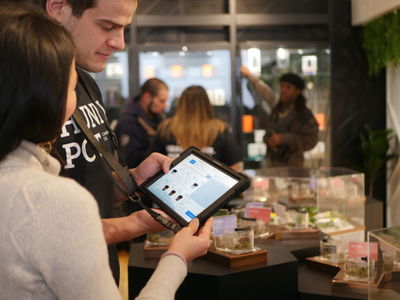Cultivate Loyalty and Increase Customer Engagement with Loyalty Programs
Loyalty programs can be a powerful tool for inspiring customer loyalty, increasing brand advocacy and overall customer engagement. Loyalty programs can be applied in different ways, such as rewarding customers for frequent purchases, creating exclusive customer perks, or offering incentives like discounts, points, or rewards. Companies should carefully consider their programs in order to ensure maximum customer engagement and satisfaction.Innehåll:

What is a Loyalty Program?
A Loyalty Program is a program created by a business to reward customers for their loyalty and/or activities. They can take a variety of different forms, from rewards cards, discount programs, and subscription services, to more advanced online platforms. A Loyalty Program incentivizes customers to buy and engage with a business on an ongoing basis by offering rewards for their loyalty. This helps to build trust and create a bond between the customer and the business, leading to increased customer engagement and loyalty. With the right Loyalty Program, businesses can create a strong and devoted customer base who will drive revenue and ensure the long-term success of the business. Behöver du en hemsida? Vill du bygga en hemsida men vet inte var du ska börja? Vår webbplatsbyggare är den perfekta lösningen. Lätt att använda och med möjligheten att anpassa för att passa dina affärsbehov kan du få en professionell webbplats på nolltid.
Benefits of Loyalty Programs
Loyalty programs can be a powerful way to increase customer engagement and to build relationships with your customers. Loyalty programs offer various benefits to your customers, such as points for purchases and rewards for reaching milestones. By offering these incentives, customers are encouraged to continue to purchase from you. This can help you to retain customers who would otherwise be likely to move on to another company.Additionally, loyalty programs provide you with valuable insight about your customers. A loyalty program can give you access to data about customer preferences and habits, which can be used to develop more successful marketing and product strategies.
These benefits can create a loyal customer base, happy customers with a positive relationship with your company, and ultimately more business. A loyalty program can be an effective way to cultivate customer loyalty and engagement.
Types of Loyalty Programs
Loyalty programs are one of the most popular methods businesses use to cultivate loyalty and increase customer engagement. Customers are rewarded for their loyalty with discounts, points, rewards, or other incentives. There are a variety of loyalty programs that businesses can utilize, depending on their industry and objectives.One type of loyalty program is cash-back. This type of program rewards customers for purchases with a percentage of their purchase as a credit back to their account. Other reward systems consisting of a points-based system or tiered rewards systems work to incent customers to accumulate points or reach a certain level of consumer activity or purchases.
Businesses can execute coupons and promotions through loyalty programs. Coupons are a great way to reward customers and encourage them to make further purchases. Additionally, subscriptions can be established to promote repeat electric and auto-purchases.
Freemium loyalty programs are also a popular type of loyalty program. They offer premium rewards and experiences to high-value customers. Examples include access to exclusive events, products, and memberships.
Finally, referral loyalty programs reward customers for successfully referring customers to a business. Examples of referral loyalty programs range from bonuses for referring customers, to discounts for both the referrer and the referred.
Each type of loyalty program caters to different customer demographics, and understanding the make-up of the customer base is key to selecting the most successful program for any given business.
How to Create a Loyalty Program
Creating a loyalty program can help any business cultivate loyalty and increase customer engagement. To get started, businesses need to determine their goals for the program. Once your goals are set, you can decide what type of points scheme or reward structure works best for your business. Points can be based on dollar amounts, purchases, visits, etc. You should also decide the type of award or discounts customers will receive when they accumulate enough points.Next, you should decide how customers can earn and redeem points. Many businesses opt for an online or mobile loyalty program which allows customers to manage their points and rewards. Additionally, customers should be rewarded instantly so they can experience the benefits right away.
Finally, businesses should make sure to promote their loyalty program. This can include email updates, SMS messages, in-store advertisements, and social media campaigns. Reminding customers of the loyalty program can help to increase engagement and ensure that customers stick with your program.
Best Practices for Loyalty Programs
Loyalty programs are one of the most effective ways to cultivate customer loyalty and engagement. To ensure your loyalty program is effective and successful, there are several best practices to follow.First, keep your loyalty program simple. Focus on core rewards that are easy to understand, have a quick and easy sign-up process, and easy to use.
Second, recognize and reward your customers. Acknowledge each customer’s purchases and reward them for their loyalty with meaningful rewards. Offer a variety of reward options that are customizable and personalized to the individual.
Third, understand what motivates your customers. Knowing what motivates your customers is essential to creating loyalty and engagement. Be sure to ask your customers what motivates them and use their responses to shape your loyalty program.
Finally, ensure your loyalty program is integrated with your overall marketing strategy. Your loyalty program should be coordinated and reinforced with all campaigns and initiatives to create an integrated customer experience.
By following these best practices, you will be able to create a loyalty program that will drive loyalty, engagement, and ultimately, higher customer satisfaction.
Common Challenges with Loyalty Programs
Using loyalty programs to increase customer engagement can be an effective strategy for businesses, but there are a few common challenges that can arise.One of the biggest concerns is cost; loyalty programs require an initial outlay of resources to design, as well as ongoing costs to administer and maintain. The cost of implementing these programs must be weighed against the potential rewards in order to be worth the investment.
Another challenge is program design. Loyalty programs should be designed with the customer in mind, ensuring that they are easy to use, provide desirable rewards, and offer appropriate levels of customization. Knowing what customers value and what type of program they prefer can take some trial and error.
Finally, successfully implementing a loyalty program requires careful communication and management. Customers must be aware of the program, understand it, and take advantage of it. This is a key area which can make or break a loyalty program – without effective communication, programs will fail to generate the value they offer.
Key Considerations for Loyalty Programs
When considering a loyalty program, businesses should weigh the cost benefits of such a program against customer engagement. Customers should be rewarded for their patronage, and the program should be designed in a way that will encourage them to return often. A successful loyalty program should offer exclusive rewards, such as early access to sales, special discounts, or free products.Businesses should also consider the ease of access that customers can have to the loyalty program. It needs to be accessible via multiple platforms so customers can join and take advantage of the rewards at any time. If a program is difficult to navigate or navigate, customers may not take the time to use it.
Businesses should also review their current customer service practices to ensure they align with the loyalty program they are considering. If their customer service practices are poor, a loyalty program will not be able to counteract that.
Furthermore, businesses should also consider the technology that is used to manage and track the loyalty program. It should be intuitive and easy for customers to use, as well as for employees to manage. If the technology is too complicated or does not offer the tools needed for the program to run effectively, it may not be the best option for the business.





